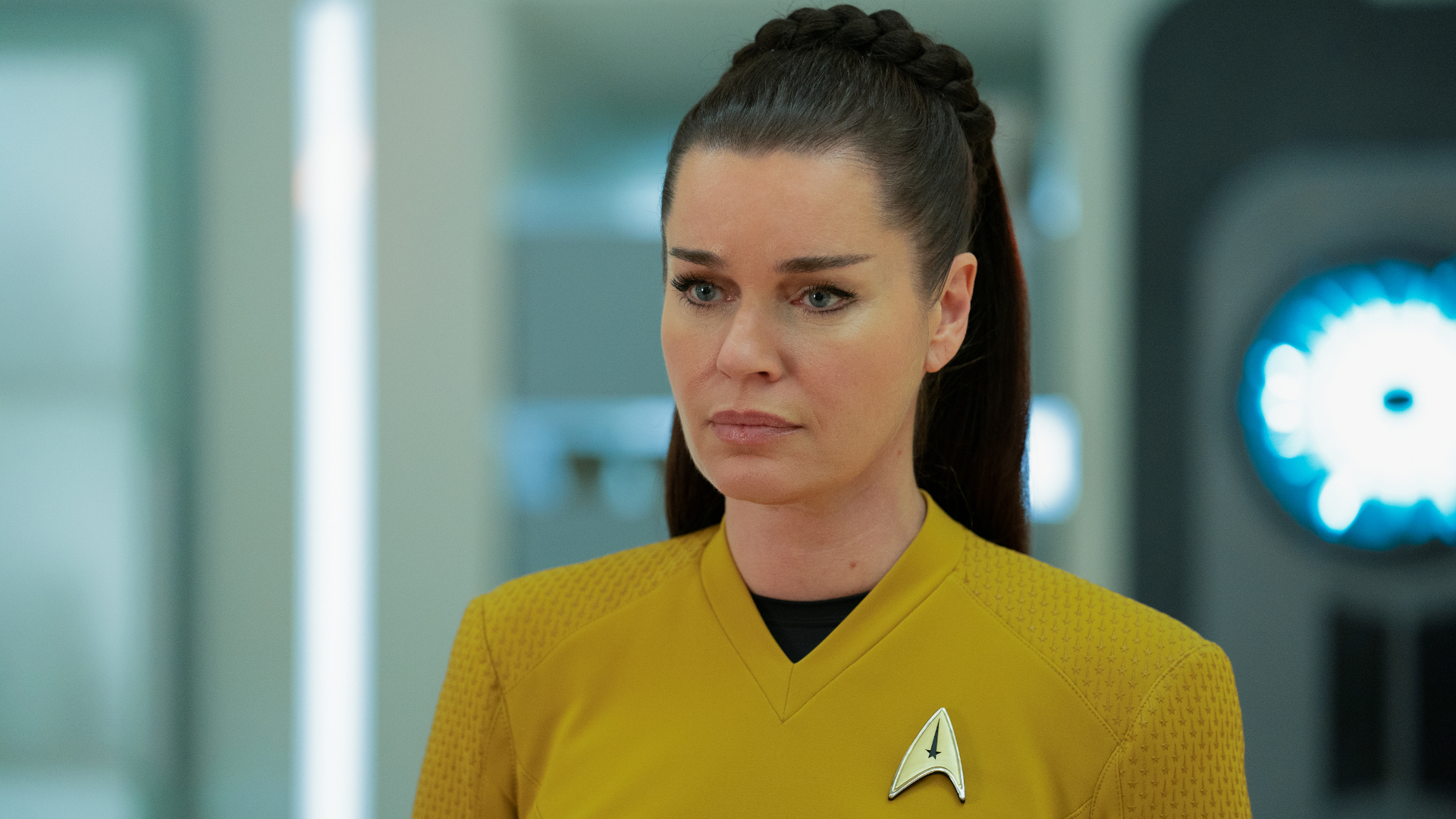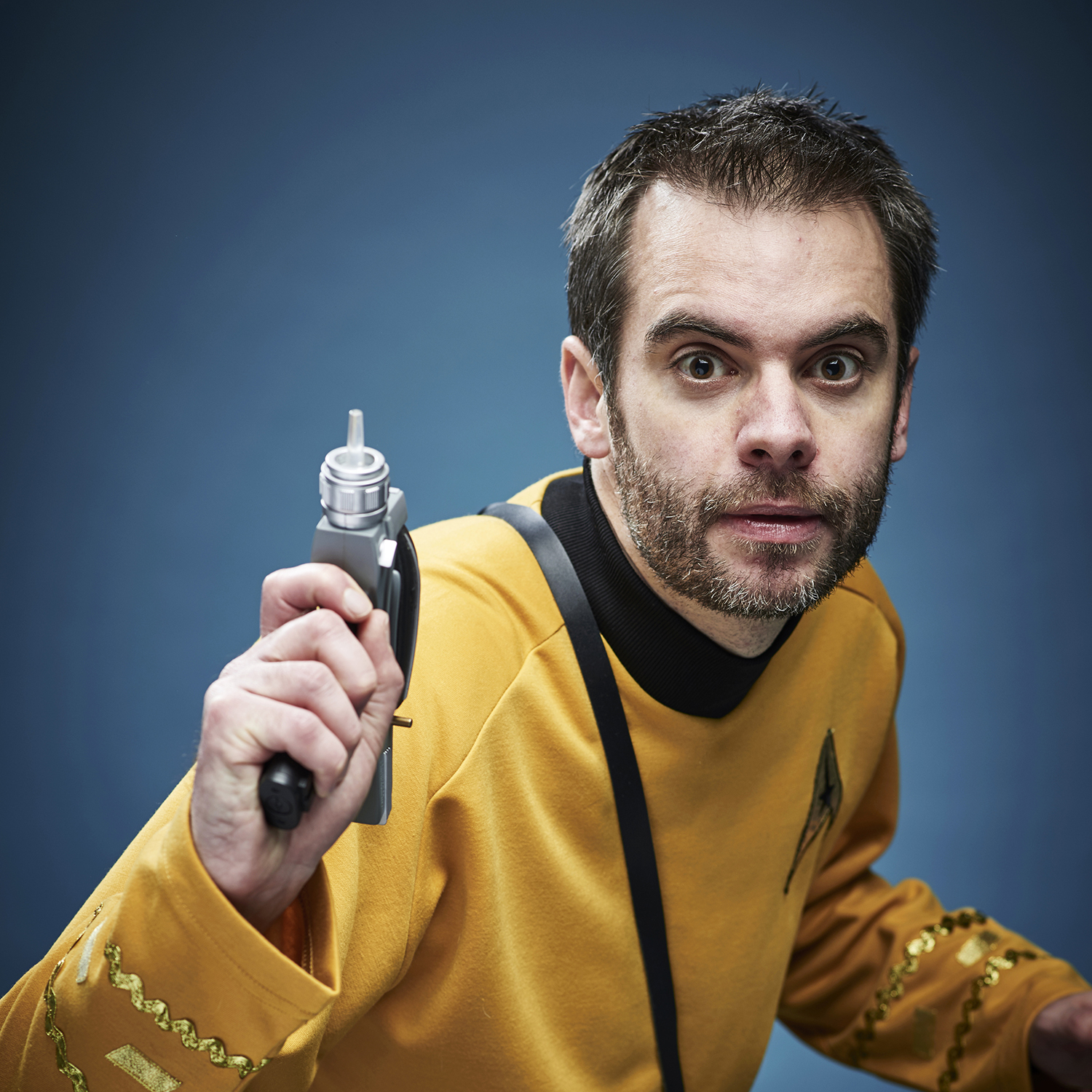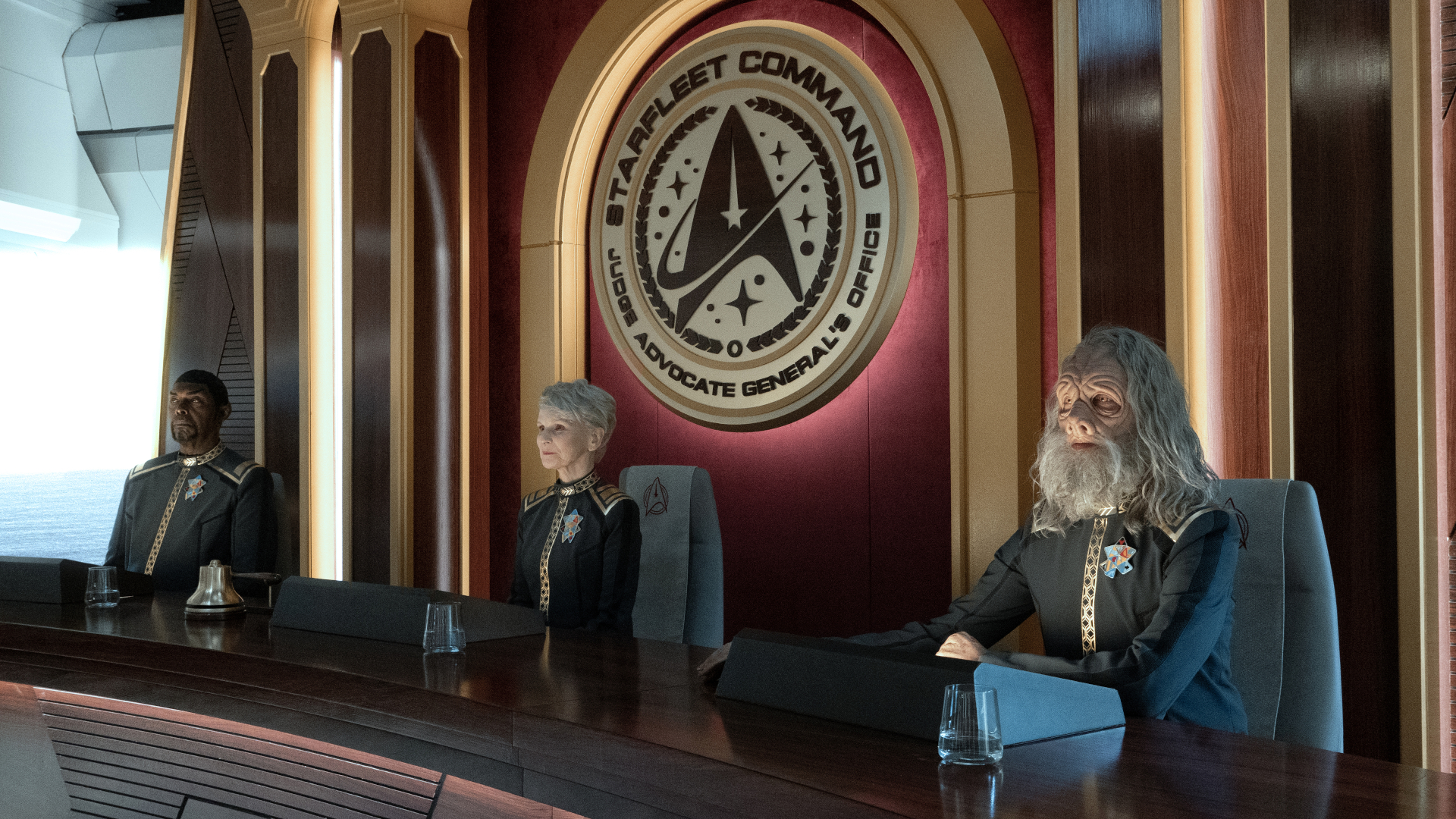Star Trek: Strange New Worlds: Augments, Illyrians and the Eugenics Wars
Why first officer Una Chin-Riley was on trial, and how it links all the way back to Khan Noonien Singh.

Warning: Spoilers ahead if you haven't watched "Star Trek: Strange New Worlds" season 2, episode 2, "Ad Astra per Aspera".
From original series two-parter "The Menagerie" to "The Next Generation" classic "The Measure of a Man", "Star Trek" has always loved a courtroom drama. "Ad Astra per Aspera" continues the tradition, as USS Enterprise first officer Una Chin-Riley (aka Number One) goes on trial.
Her crime? Nothing more than being an Illyrian, a species whose penchant for genetic modification puts them at odds with Federation laws preventing anyone from tinkering around with their DNA.
Una's predicament has its roots in the story of the infamously wrathful Khan Noonien Singh, and also ties into plotlines explored in "Deep Space Nine", "Enterprise" and "Picard". It's also certain to have further implications for "Strange New Worlds," so here's everything you need to know about Augments, Illyrians and the Eugenics Wars.
Why is Una on trial in "Strange New Worlds" season 2?
Simply because of who she is and where she comes from.
In season 1 episode "Ghosts of Illyria" confirmed that the USS Enterprise's highly respected first officer is an Illyrian, a species whose use of genetic modifications contravenes long-standing Federation laws. These rules would have prevented her from serving in Starfleet, so she's kept her heritage hidden throughout her career.
Although Captain Pike opted to keep Number One's secret when he learned the truth about her origins origins, someone else spilled the beans, leading to Una's arrest in season 1 finale 'A Quality of Mercy'.
Breaking space news, the latest updates on rocket launches, skywatching events and more!
During the trial, it was revealed that it was actually Una who'd reported herself to the authorities in the hope that her case might help the blinkered Starfleet authorities understand Illyrians a better. She also wanted her crew to know her for who she really was, and to finally feel safe. Her counsel, Neera Ketoul (a fellow Illyrian), successfully argued that Pike was effectively granting Una asylum from persecution by allowing her to remain on the Enterprise, and the charges against her were dropped.
Watch Star Trek: Strange New Worlds on Paramount+:
What is an Illyrian?
Although Una looks human, Illyrians are a different species entirely, hailing from the Delphic Expanse that was also home to "Star Trek: Enterprise" antagonists the Xindi.
Rather than trying to adapt new worlds to suit their needs, the Illyrians use genetic modification techniques to adapt their bodies to new, often hostile environments – Una's augmentations give her superhuman healing abilities, as well as the ability to literally light up a room.
This penchant for fiddling around with DNA means that their appearance can vary greatly, ranging from the human-like Una, to subtly webbed hands and feet, and the sort of lumpy-foreheaded alien look that's a mainstay of the franchise.
Have we always known that Una is an Illyrian?

Number One’s first appearance in original "Star Trek" pilot "The Cage" (made in 1965) didn't tell us much (if anything) about her backstory, and there was little to make us suspect she was an alien – indeed, back then the ship's extra-terrestrial quotient effectively consisted of Mr Spock.
However, legendary "Trek" writer DC Fontana did allude to Number One's origins in non-canonical 1989 novel "Vulcan's Glory", where Pike explained that, "Some officers have a difficult time dealing with the fact that she is a genetically perfect being. On her planet, Illyria, excellence is the only criterion that is accepted."
This relatively obscure piece of "Trek" lore has subsequently been reinvented and retconned into official canon.
Why does Starfleet have an issue with Illyrians?
It's not so much the Illyrian people as their penchant for genetic modification, a practice that was made illegal in the wake of the Eugenics Wars that ravaged Earth in the late 20th century and early 21st century.
What were the Eugenics Wars?
When a group of 20th century scientists successfully engineered a group of men and women who were stronger, faster and more intelligent than your average human, they didn't account for one important detail – these so-called Augments had a massive superiority complex that resulted in an unstoppable desire to conquer and subjugate ordinary homo sapiens. The most famous/infamous of these superhumans, a certain Khan Noonien Singh, came to rule a quarter of the Earth, across Asia and the Middle East.
"Trek" history is a little fuzzy on the subject of whether the subsequent Eugenics Wars were fought between the Augments themselves, or by ordinary humans looking to overthrow their GM overlords. Either way, we do know that millions of people died, and that much of the planet was laid to waste in a conflict that subsequently escalated into a fully blown World War III.
With Augments blamed and ostracized for the near-destruction of Earth, the authorities moved to ban all genetic engineering on humans – a resolution that remained in place for centuries.
When exactly did the Eugenics Wars take place?
That's a good question. While various "Star Trek" movies and TV shows have alluded to the 21st century being a post-apocalyptic wasteland – and Khan's first appearance in original series episode "Space Seed" dated the Eugenics Wars between 1992-96 – this doesn't tally with "Star Trek: Picard" season 2's extended stay in a very normal 2024 or, indeed, the real world.
But we wonder if the "Trek" chronology might be going through a bit of subtle retconning to make the timeline a little more plausible. Data's "ancestor" Adam Soong pulling out a file labelled "Project Khan" (dated 1996) in the "Picard" season 2 finale certainly suggests Khan could have been born later than we originally thought – unless, of course, the file refers to a plan to replicate a whole new generation of superbeings from Khan's "superior" DNA.
And tweaks like this seem entirely justified as the franchise evolves – as regular ’90s scripter Ronald D Moore put it to Cinefantastique, "What looked like the distant future in 1967 [when 'Space Seed' was broadcast'] is not so distant any more. I don't blame them for not having the foresight to see that in 30 years this would be important in the series."
Are there any other Augments in "Star Trek" lore?
"Trek" has explored the implications of genetic manipulation on several occasions. The most famous example was arguably "Deep Space Nine" medic Dr Julian Bashir, who was shocked to learn that his father had played around with his DNA when he was a kid, with the aim of making him less of a disappointment. While Bashir Sr was never going to win dad of the year, the augmentations to his boy resulted in enhanced mental agility, super-fast reflexes and improved hearing. Despite the Federation's ban on such modifications, Bashir was allowed to remain in Starfleet when his dad agreed to go to prison for his crimes.
Related: Best Star Trek Deep Space Nine Episodes
"Enterprise" also ventured into GM territory, with a plot line about another of Data's ancestors, Arik Soong, set out to prove that Augments wouldn't automatically grow up to be bad 'uns like Khan.
Soong's work was later adapted by Klingons looking to make Augments of their own. Their plan backfired, however, proving lethal until Dr. Phlox engineered a cure that – conveniently for overall continuity – gave a group of Klingons the smooth-foreheaded appearance they had in the era of the original series. When Worf told his confused DS9 crewmates "We do not discuss it with outsiders" in classic flashback episode "Trials and Tribble-ations", this anomaly was what he was talking about.
And Una's shipmate, La'an Noonien Singh, is a descendant of Khan. She lives in fear that genetic modifications may suddenly manifest themselves, making her a danger to the Enterprise crew.

Richard's love affair with outer space started when he saw the original "Star Wars" on TV aged four, and he spent much of the ’90s watching "Star Trek”, "Babylon 5” and “The X-Files" with his mum. After studying physics at university, he became a journalist, swapped science fact for science fiction, and hit the jackpot when he joined the team at SFX, the UK's biggest sci-fi and fantasy magazine. He liked it so much he stayed there for 12 years, four of them as editor.
He's since gone freelance and passes his time writing about "Star Wars", "Star Trek" and superheroes for the likes of SFX, Total Film, TechRadar and GamesRadar+. He has met five Doctors, two Starfleet captains and one Luke Skywalker, and once sat in the cockpit of "Red Dwarf"'s Starbug.







